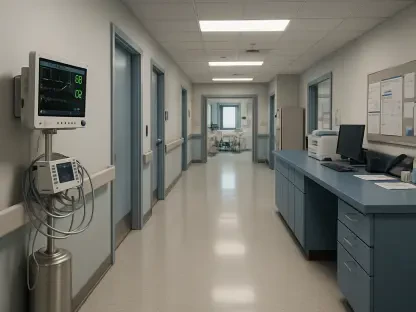The senior living industry is experiencing significant changes driven by the adoption of value-based care, a model that prioritizes comprehensive well-being and improved health outcomes over merely treating illnesses. At the 2025 National Investment Center for Seniors Housing & Care’s Spring Conference, experts discussed how value-based care is positively impacting healthcare and senior living by addressing an individual’s various needs. This shift is compelling operators to embrace new approaches and integrate services like nutrition, housing, and transportation into their care models.
The Fundamental Shift to Value-Based Care
Comprehensive Well-being Over Illness Treatment
Bob Kramer, co-founder and strategic adviser, described value-based care as a fundamental shift in the industry over the past five years. This model emphasizes holistic well-being rather than focusing solely on treating illnesses. By integrating various services such as nutrition, housing, and transportation, value-based care aims to achieve better health outcomes for seniors. This approach acknowledges that health is influenced by multiple factors and seeks to address all aspects of an individual’s needs.
This paradigm shift benefits not only the residents but also the investors in senior living. Brian Fuller, managing director at ATI Advisory, highlighted that value-based care promises not only improved health and higher resident satisfaction but also offers revenue growth opportunities for investors. Moreover, by focusing on well-being, operators can potentially ensure longer stays for residents, which translates to more stable income streams. To leverage this, senior living operators need to align their goals with this model to foster an environment that promotes comprehensive well-being.
Technology Integration in Service Delivery
As senior living operators adapt to this value-based care model, they are also integrating advanced technologies to enhance service delivery. Larry Leisure from Chicago Pacific Founders emphasized the unique position of senior living operators due to their daily interactions with older adults. Technologies such as artificial intelligence and remote patient monitoring could be game-changers by streamlining operations and reducing friction in care delivery. These technological advancements enable operators to monitor residents’ health more effectively and offer timely interventions when necessary.
The integration of these technologies not only enhances the quality of care but also helps operators efficiently manage their resources. For example, remote patient monitoring allows for continuous health tracking, reducing the need for frequent in-person check-ups. This can lead to early detection of potential health issues and timely treatment, ensuring better health outcomes for residents. By leveraging such technologies, senior living communities can position themselves as proactive care providers, further aligning with the principles of value-based care.
Leadership and Strategic Planning
Demonstrating Value to Payers and Insurance Companies
Andy Eby, President of Bickford Senior Living, drew an interesting comparison between the senior living industry’s current position and Cousin Eddy from “National Lampoon’s Christmas Vacation”—present but underutilized. Eby stressed the need for senior living operators to actively demonstrate their value to payers and insurance companies. By showcasing the positive outcomes they can achieve through value-based care, operators can strengthen their positions within the healthcare ecosystem and attract more support from these stakeholders.
Eby pointed out that the shift from a reactive to a proactive healthcare approach is essential. To achieve this, operators must take greater responsibility for the health outcomes in their communities. Bickford Senior Living has already moved in this direction by establishing a transformation center to test and implement new ideas. This proactive approach not only improves health outcomes but also shows a commitment to innovation, making operators more attractive to potential investors and partners.
Creating Customized Strategies and Roadmaps
Panelists at the conference urged senior living operators to develop customized strategies and roadmaps tailored to their specific organizations. Brian Fuller pointed to the healthcare sector’s experience from 15 years ago, when success was achieved by actively engaging with the market to generate opportunities. He emphasized the importance of senior living operators taking initiative and leading the transformation within their organizations, rather than waiting for external forces to drive change.
For operators to successfully transition to value-based care, they must adopt a hands-on approach in crafting their strategies. This involves understanding the specific needs and preferences of their resident populations and tailoring their services accordingly. By doing so, operators can ensure that their transition to value-based care is not only smooth but also effective in achieving better health outcomes. The key message is clear: operators must take control of the situation, innovate continuously, and demonstrate their critical role in improving the health and well-being of older adults.
Seizing the Opportunity
Innovation and Leadership are Crucial
In conclusion, the transition to value-based care in the senior living industry presents both a challenge and a significant opportunity. Operators are encouraged to seize this opportunity by taking control, innovating, and showcasing their role in enhancing health outcomes for older adults. This shift requires a proactive approach and a commitment to leadership and strategic planning, as highlighted by industry experts. The need for transformation in senior living is urgent, and operators must rise to the occasion to ensure they remain relevant and effective in this evolving landscape.
Future Considerations
The senior living industry is undergoing transformative changes due to the adoption of value-based care, which emphasizes holistic well-being and improved health outcomes over merely addressing illnesses. During the 2025 National Investment Center for Seniors Housing & Care’s Spring Conference, industry experts deliberated on how this care model positively affects healthcare and senior living by catering to an individual’s comprehensive needs. This paradigm shift is driving senior living operators to adopt innovative strategies and incorporate services like nutrition, housing, and transportation into their care models. The focus is increasingly on creating environments that support all facets of a senior’s life, aiming to enhance their quality of life in more profound ways. By integrating these essential services, the senior living sector can provide a more supportive, healthy, and fulfilling lifestyle for older adults, ensuring that their varied needs are met effectively, ultimately leading to better health outcomes and overall satisfaction.









